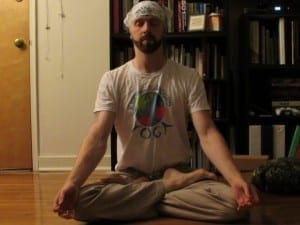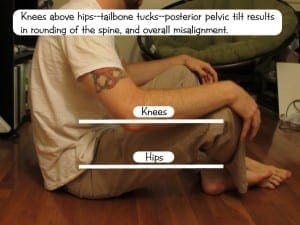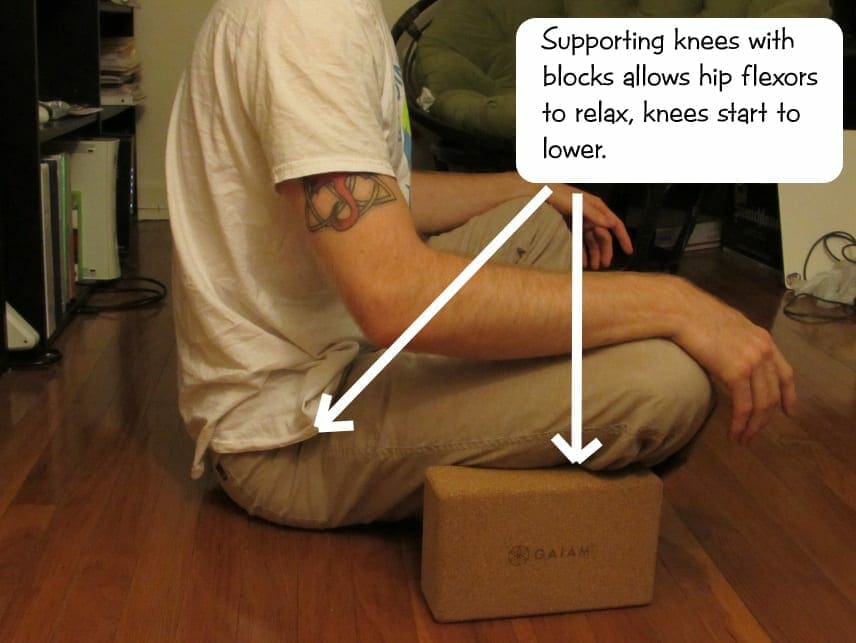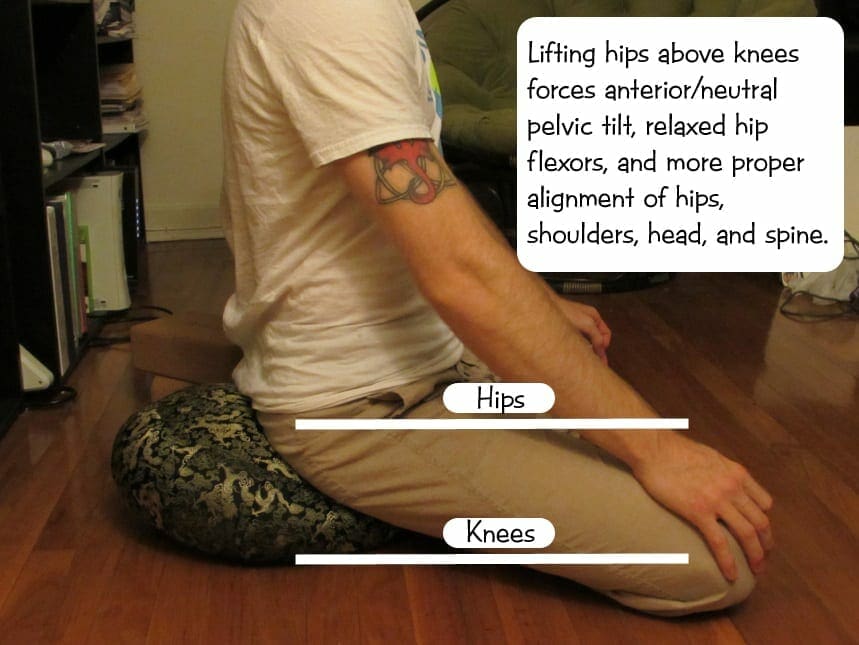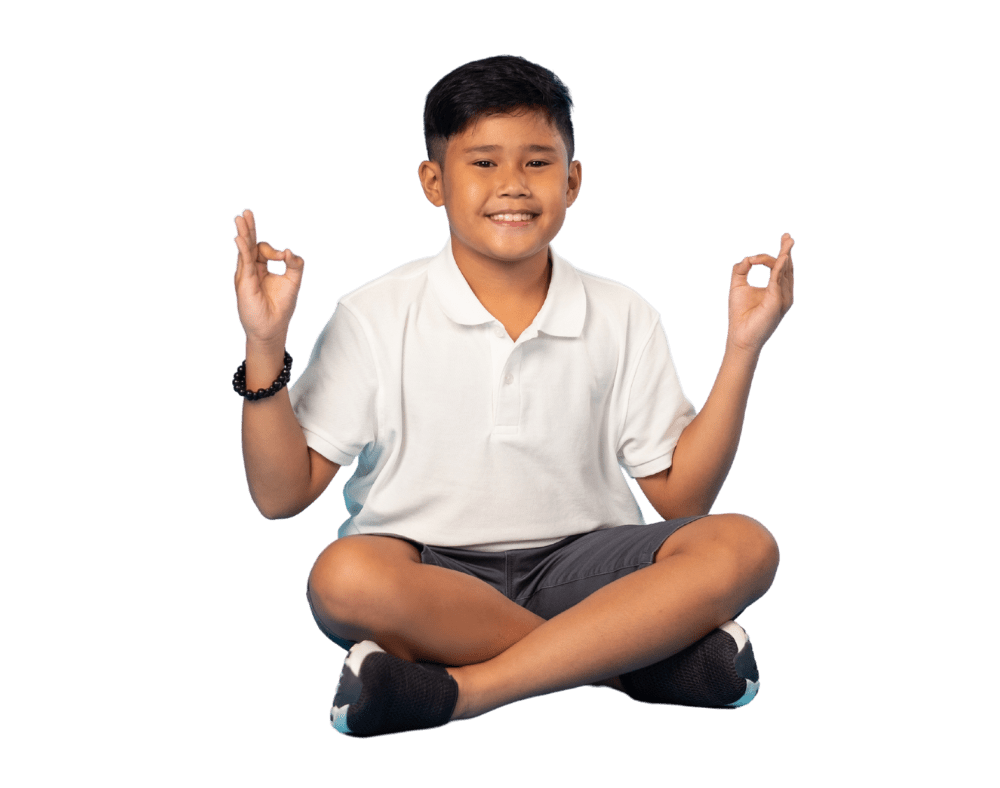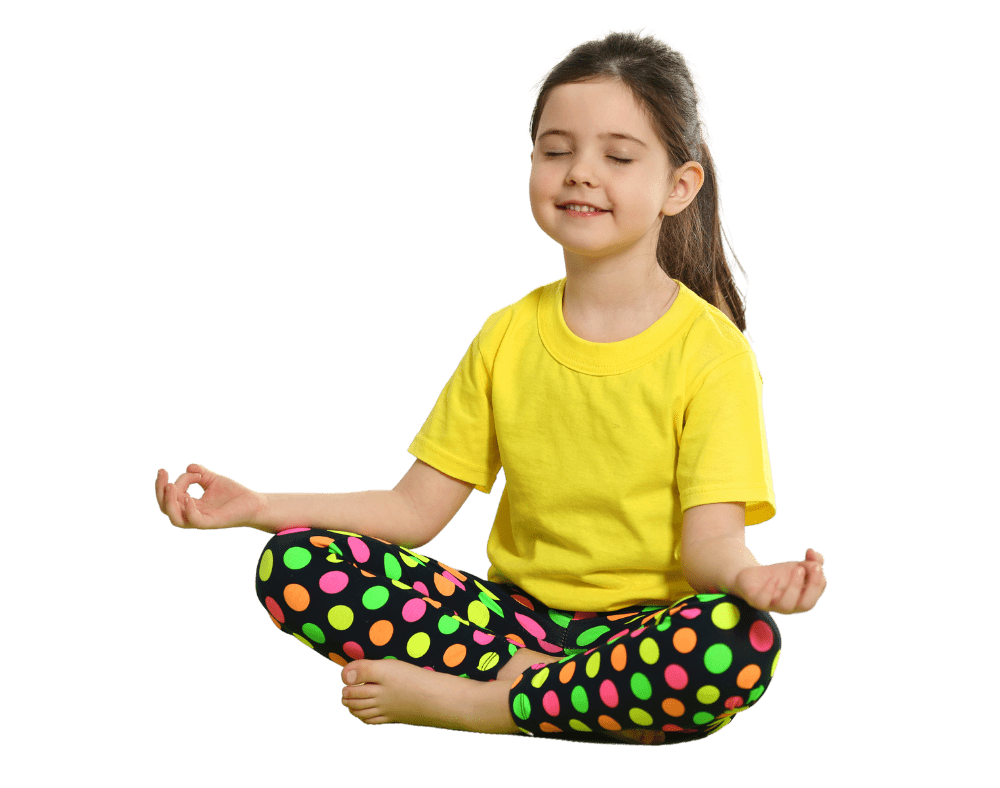Padmāsana is the iconic, classical Yoga pose. But why? To begin our study, let’s dissect the name. The name comes as a compound of two Sanskrit words:
– padma – a lotus
– āsana – sitting, sitting down; abiding, dwelling; (roughly) pose.
Āsana, as a noun, comes from the verbal root as which translates as “to be present; to exist; to sit quietly.” Patanjali uses this word as one of his eight limbs—but more on that later. Combining multiple words into one may be done to list, enumerate, show possession, or to use one word (the antecedent) to describe another, as we see with Padma-āsana. Thus, we get the understanding that Padmāsana is the arrangement of the body as a lotus.
Why The Pose?
Patanjali, the authority on classical Yoga philosophy, describes asana as having two qualities: being steady/stable and comfortable, easy on the body. Of course, Padmāsana fits this bill perfectly! With soft muscles through feet, calves, and thighs, the knees bend easily and the feet can be molded to rest comfortably atop the thighs; with relaxed hips, knees lower to the ground, widening the base for stability and support. The pelvis provides a wide foundation for the spine to stack up and the head to sit on top.
To achieve ease and comfort in this pose requires a delicate balance of forces. Too much strength in the front or back of the body, offsetting the opposite pull, can quickly rip us from our meditation. For example, if the abdominals greatly overpower erector spinae and latissimus dorsi, then the shoulders hump, the head falls forward, we lose the curve of the lumbar spine, and the stress and strain in any number of a few key regions can cause discomfort, distracting us from our meditation. Many adults have spent many years, decades, even lifetimes neglecting the arrangement, the seat of the body, but children have fresh, supple bodies that will hold the form they are taught. Even so, many children can still be seen slouching in chairs or with knees well above the hips when crossed legged; let them sit on blocks or blankets so that they can learn when and where they need to relax muscles to develop flexibility and engage to build strength. Thus, it is of great importance that kids learn the best way to arrange for meditation and for life.
Every pose has its subtle aspects, the way it influences the flow of energy and attention of the mind. As previously described, the body is arranged in such a way as to allow minimal muscle effort. As a result, the muscles can relax, taking rest, and energy can be redirected toward the efforts of the mind and its pursuit of single-minded focus. Instead of effort (energy) getting trapped and wasted in the limbs or even the torso trying to uphold the body, the body is supported by its own structure, its bones, and energy can flow freely.
Why The Lotus?
The Padmaa, the Lotus, is a significant image in Indian literature as a symbol of great and rare beauty; it oftentimes appears in poetry to describe the face or even feet of the beloved; deities are described as sitting atop or being birthed in a lotus or having lotuses blossom at their footsteps. In Indian philosophy, the lotus is a metaphor for the journey of the Self back to the Self. Long before we see the flower, the lotus seed sinks deep beneath the surface waters of canals and swamps to settle into the muck and grime. It soaks up the nutrients it needs from the most disgusting and inhospitable of conditions so that the stem may rise tall and strong to flower at the surface, opening to the true beauty of the sunlight and fresh air.
The life of the yogi is perceived in the same way. Even if born into the lap of luxury, the being, consciousness, and bliss of Self Realization are hidden to us, heavily veiled behind the needs, wants, and whims of material existence. Deeply, we know there is more, that we are meant for more, so no matter how hard we try to fulfill these wants and needs, we are always left unsatisfied and wanting more. We are the seed and roots soaking up nutrients from the earth at the bottom of the water, becoming strong but still lacking that final component: the Light Of Truth. The stem begins to grow, rising and reaching, following as the light begins to grow brighter just as we eagerly pursue practice with classes, teachers, and private study. One day, with a firmly grounded practice that has been “well attended to for a long time, without break and in all earnestness,” we may gain the full, direct perception and realization of Truth, basking in its radiant glow.
In the pose itself, the thighs and hips are our root, providing our firm, stable base so that the stem of our spine may rise tall and flower at the seat of consciousness: the crown. So, of course, when the kids ask, you can remind them to sit tall and let their lotus rise to meet the Sun!

